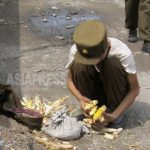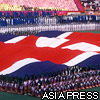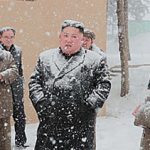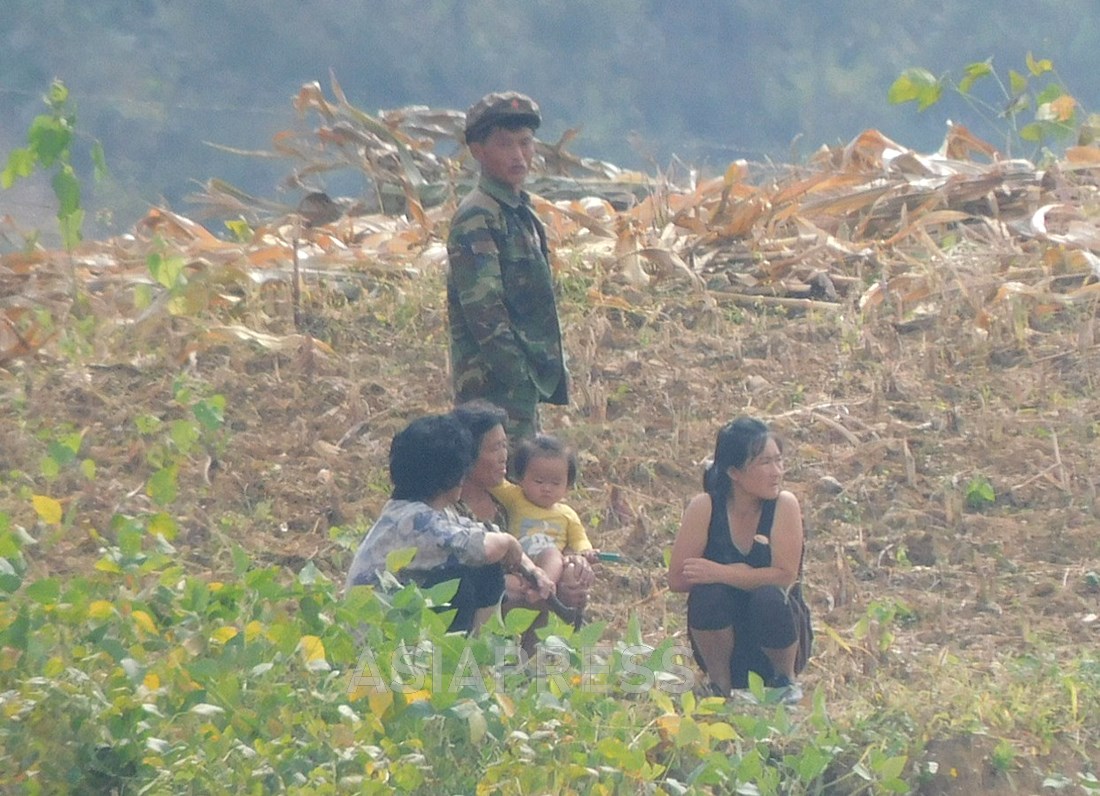
The Kim Jong-un regime has made noticeable efforts to bring about achievements in the agricultural sector this year. During various meetings of the Workers’ Party of Korea’s Central Committee, agricultural issues were discussed several times as top agenda items, and the regime focused on increasing food production through mass mobilizations of its people starting in early spring. Now collective farms throughout the nation are in the midst of the harvest season. An ASIAPRESS reporting partner visited a collective farm in North Hamgyung Province in late September to conduct a survey of the situation there. At around the same time, a Chinese reporting partner took photos of a farm in North Pyongan Province near the Yalu River involved in the harvest. Going forward, ASIAPRESS will publish a series of articles talking about North Korea’s present farming conditions. (KANG Ji-won / ISHIMARU Jiro)
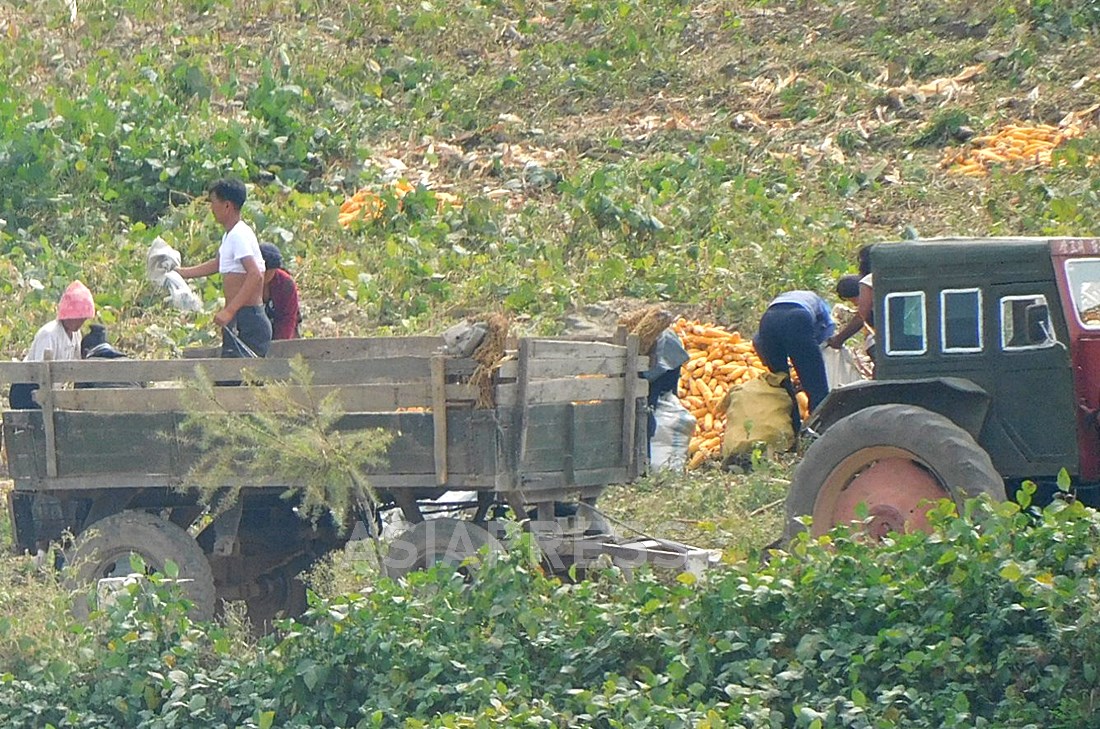
◆ Kim Jong-un regime orders increase in agricultural production
“The most important and critical task of our revolution today is doing a good job farming, and whether farming is a successful depends completely on the roles of the party organizations and party members.”
The above comes from an editorial published in the Rodong Sinmun on March 21. The newspaper called on Workers’ Party of Korea organizations to focus on increasing agricultural production around the time of the start of the spring planting season.
While the regime mobilizes massive numbers of people from workplaces, schools, and social organizations to farming areas every year, the authorities took the unusual step of mobilizing soldiers to the farms to repair waterways and participate in the planting of crops this year. Many farms had around 100 soldiers – the size of one infantry company - working in the fields.
Collective Farm “B,” which was the target of ASIAPRESS’s recent investigation, has around 500 farmers. The farm largely cultivates the mainstay of North Korean agriculture, corn. The farm is slightly on the smaller side compared to other farms in North Hamgyung Province; however, it is typical to the northern area of North Korea with its many mountains and limited amounts of farmland.
Photographs of a farm were also taken by a Chinese reporting partner in late September. The reporting partner took a ferry boat operating along the Yalu River on the border with North Korea and China and took pictures of Sakju County, North Pyongan Province. As it happened, farmers were busy harvesting corn.
The investigation covered a very small number of farmers in the northern region of North Korea, and we were not able to find out about the situation in other areas, such as North Korea’s breadbasket region, which stretches across the two Hwanghae provinces in the country’s southwest area. However, the investigation was able to identify certain trends regarding the kinds of tasks collective farms are conducted and how they harvest corn.
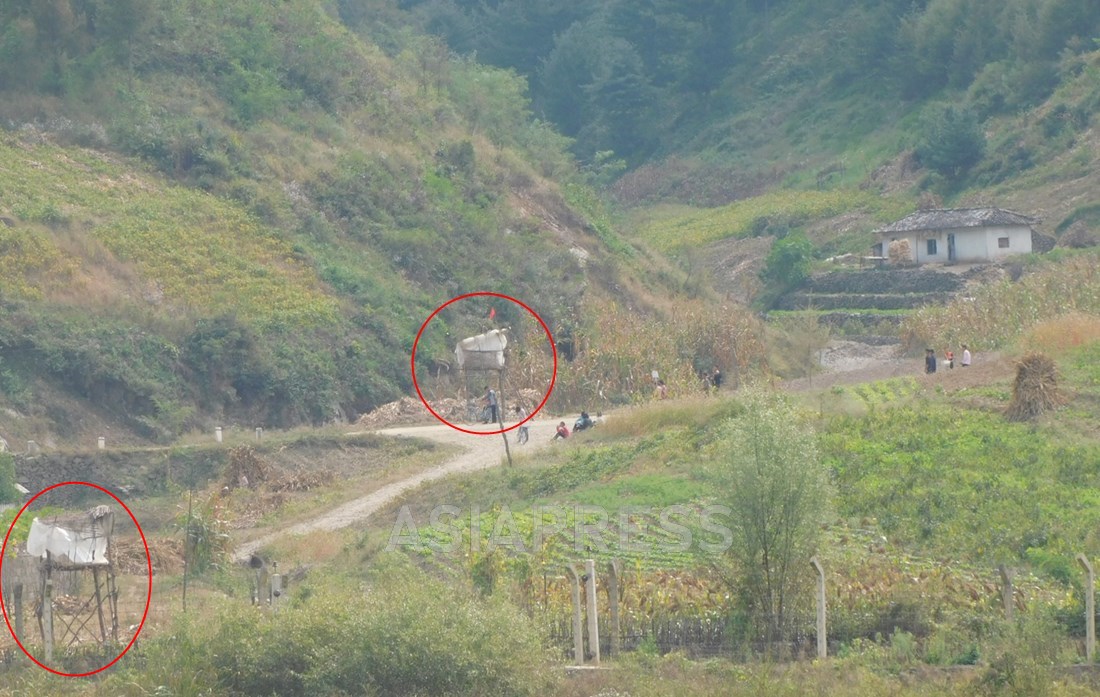
◆ Yields increased due to the good weather, but materials shortages still severe
Below is an interview with “A,” the reporting partner who conducted the investigation. When he visited Collective Farm “B,” the farmers were at the height of the harvest of corn.
―― How was the corn yield this year at collective farm “B”?
They say the yield was slightly better than last year. One sub-work team I surveyed was able to harvest 4.6 tons of corn per hectare, which is slightly more than the 4.3 tons achieved last year. That being said, some of the crops were lost because they weren’t ripe yet or were stolen, so they say it’s impossible to know the final yield until the release of the final assessment, which will tell us how much was harvested and how much each farmer will receive.
※ The normal yield of corn in North Korea is around 6-7 tons per hectare, so the farm’s yield this year is not particularly good.
※ A sub-work team, or bunjo, is the smallest work unit at a collective farm. Presently, the teams are made up of around 10 people.
―― There doesn’t seem to have been any major flood or drought damage this year.
Normally, there’d have been a larger increase in production this year. They say that the lack of farming materials had a major impact. Farmers say that the materials that were difficult to obtain include: vinyl wrapping, fertilizer, parts for machinery (for tractors and other vehicles), and fuel. The farmers also face a severe lack of daily necessities. They didn’t have shoes to wear, so a shoe factory in Sinuiju provided some rubber shoes that the farmers used during the summer.
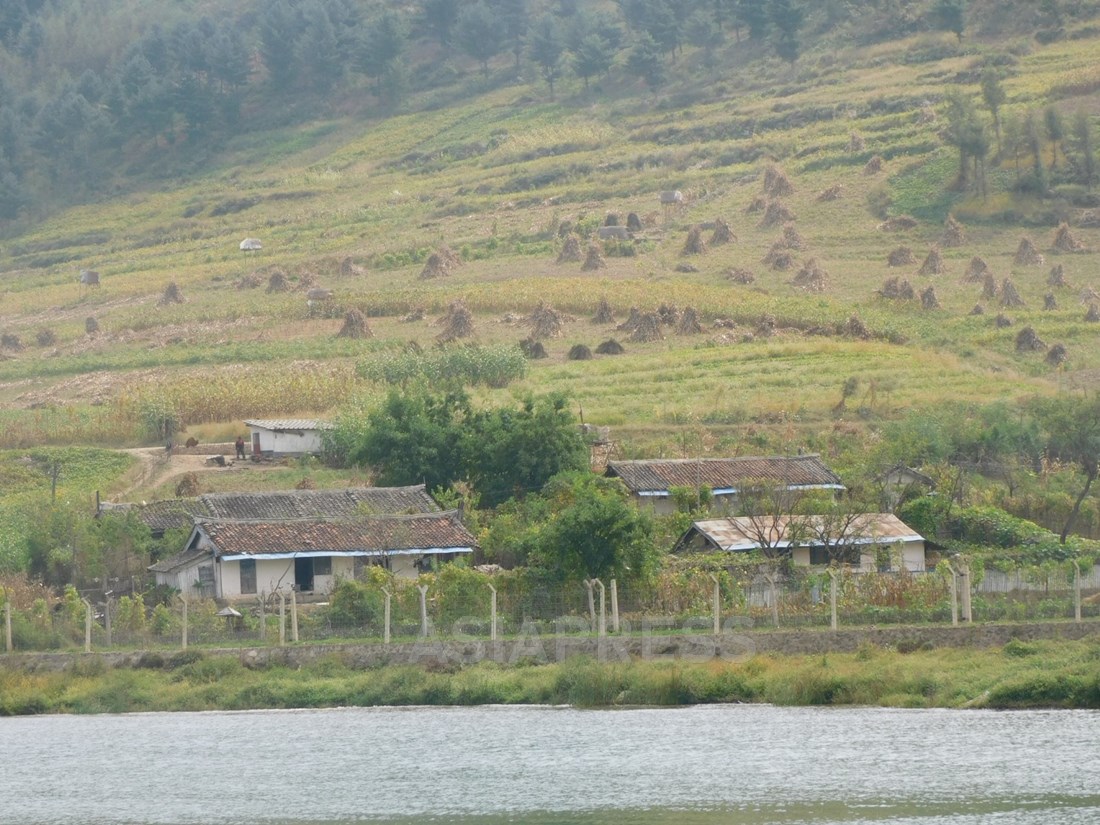
Taken in late September 2023 on the Chinese side of the border across from Sakju County, North Pyongan Province. (ASIAPRESS)
◆ Farmers unhappy with rare distribution of crops after the harvest
―― Did the harvest go forward smoothly?
The harvest this year was not conducted by work unit or sub-work team. In a rare move, the farm had single sub-work teams take turns to harvest the fields in turns. For example, an entire work team would gather and one sub-work team would go and harvest crops. Then farm officials would assess the crop yield and monitor the transport of the harvested crops to the threshing facility. After that, another sub-work team would then take to the field to harvest more crops. The farm did this because it wouldn’t be able to manage the harvest if sub-work teams were all working at the same time, and because there is so much lost in the farming process. The farm aimed to prevent as much of the crops from disappearing as possible.
※ Collective farms in North Korea have separate work teams that manage rice, corn, and vegetable harvesting. Work teams are made up of sub-work teams, or bunjo.
―― Were farmers able to receive a share of the crops harvested?
Even within the farm, officials conducted strict monitoring of food harvested this year. Farmers were not given their share of the crops all at once; instead, the distributions were given out once in the fourth quarter or once in the second quarter. This was aimed at preventing people from eating up all their share at once, and to prevent farmers from skipping work, given that many farmers ended up not showing up (after receiving their shares all at once). That being said, farmers are talking about how unhappy they are about not getting their shares all at once.
Corn with their seeds still attached was given out to farmers at collective farm “B” this quarter. The farm needed to use electricity to thresh the corn, along with people to do the threshing. Guards were also needed to prevent stealing of the crops, and costs were incurred to transport the corn. The distribution of corn with their seeds still attached was aimed at lowering costs as much as possible.
From the perspective of the farm managers, given they just barely prevented corn from being stolen from the fields, they find it difficult to prevent the loss of corn after it has been moved to the threshing facility. There are many guard houses around the fields to prevent newly harvested corn from being stolen. The farms also strictly control the entry of people into the farms to prevent burglaries by outsiders. ( To 2>> )
※ ASIAPRESS communicates with its reporting partners through Chinese cell phones smuggled into North Korea.
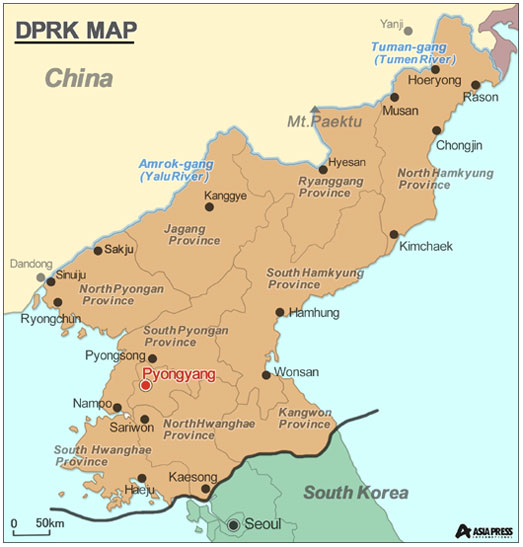
- <Inside N. Korea> A recent report on conditions at farms (7) Many people mobilized to harvest this year’s good yield of potatoes… But, “several tons of potatoes are going rotten in a storage facility each day”
- <Inside N. Korea > A recent report on conditions at farms (6) Major investigation underway after end of harvest to uncover corruption by cadres…Unfair punishment causes uproar on one farm
- <Inside N. Korea> A recent report on conditions at farms (5) Telescopic lens captures conditions in farming communities – 2 The highly-fortified border is akin to a disputed zone…why? (10 photos)
- <Inside N. Korea> A recent report on conditions at farms (4) Telescopic lens shows the present conditions in North Korea’s farming communities -1 Photographs show people mobilized for farming (5 recent photos)
- <Inside N. Korea> A recent report on conditions at farms (3) Thieves from the cities lead to strict monitoring of farming areas…farmers face tough times trying to earn cash (4 recent photos)
- <Inside N. Korea> A recent report on conditions at farms (2) The military is given priority over harvested crops because “there are many soldiers suffering from malnutrition”…In a rare move, the military takes crops directly from fields (3 recent photos)
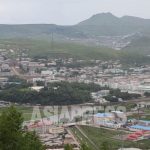

![<PHOTO REPORT>Sino - N.Korea Border: [PART3]Tensions High In The Border City As A Special Team is Dispatched For Crackdowns](https://www.asiapress.org/rimjin-gang/wp-content/uploads/2018/07/20140420_r_asiapress04X450-150x150.jpg)
